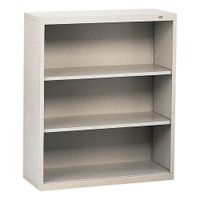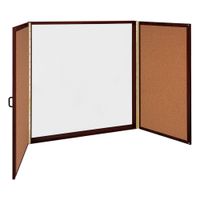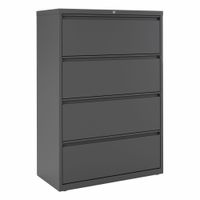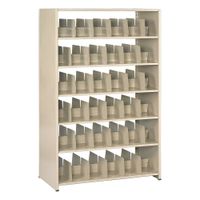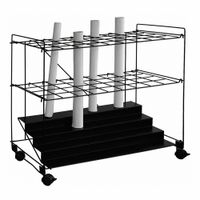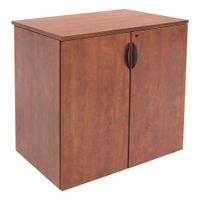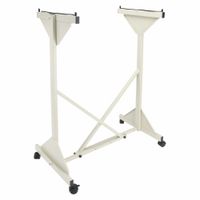Call +(254) 703 030 000 / 751 483 999 / 721 704 777
- Home
- Furnishings Appliances Hospitality
- Furniture
- Filing Storage Furniture
Frequently Asked Questions
1. What are the best filing cabinets for organizing legal and letter-size documents?
1. **HON 4-Drawer Filing Cabinet**: Known for its durability and security, this cabinet is ideal for both legal and letter-size documents. It features a high drawer capacity and a locking mechanism for added security.
2. **Lorell 14341 18 Deep 2-Drawer File Cabinet**: This cabinet is compact yet spacious, perfect for small offices. It accommodates both legal and letter-size files and is budget-friendly.
3. **Bush Furniture Key West 2 Drawer Lateral File Cabinet**: With a stylish design, this cabinet offers ample storage for legal and letter-size documents. It features full-extension ball-bearing slides for easy access.
4. **Alera 3-Drawer Lateral File Cabinet**: This cabinet provides a large storage capacity and is designed to hold both legal and letter-size files. It includes anti-tipping features for safety.
5. **Sauder Edge Water Lateral File**: Combining functionality with aesthetics, this cabinet fits well in home offices. It supports legal and letter-size documents and has a patented interlocking safety mechanism.
6. **Steelcase 4-Drawer Vertical File Cabinet**: Known for its robust construction, this cabinet is suitable for heavy-duty use. It efficiently organizes legal and letter-size files with smooth drawer operation.
7. **Devaise 3-Drawer Mobile File Cabinet**: This mobile cabinet is versatile and can be easily moved. It accommodates both legal and letter-size documents and includes a lock for security.
8. **Hirsh Industries Space Solutions File Cabinet**: This cabinet is affordable and practical, offering storage for legal and letter-size files. It features a glide suspension for smooth drawer operation.
9. **Z-Line Designs 2-Drawer Lateral File Cabinet**: With a modern look, this cabinet is perfect for contemporary offices. It supports legal and letter-size documents and has a lock for added security.
10. **Scranton & Co 4 Drawer Letter File Cabinet**: This cabinet is reliable and sturdy, designed to hold a large volume of legal and letter-size files. It features a classic design suitable for any office.
2. How do I choose the right storage cabinet for office electronics?
1. **Assess Needs**: Determine the types and quantities of electronics you need to store, such as computers, printers, or peripherals. Consider future expansion.
2. **Size and Space**: Measure the available space in your office to ensure the cabinet fits comfortably. Choose a cabinet that accommodates your electronics without overcrowding.
3. **Weight Capacity**: Check the weight capacity of the cabinet to ensure it can support your electronics. Heavy-duty cabinets are ideal for heavier equipment.
4. **Ventilation**: Ensure the cabinet has adequate ventilation to prevent overheating of electronics. Look for models with built-in fans or ventilation slots.
5. **Security Features**: Opt for cabinets with locking mechanisms to protect valuable electronics from theft or unauthorized access.
6. **Cable Management**: Choose a cabinet with cable management features to keep cords organized and prevent tangling, which can lead to damage or inefficiency.
7. **Material and Durability**: Select a cabinet made from durable materials like steel or high-quality wood to ensure longevity and protection against wear and tear.
8. **Mobility**: If you need to move electronics frequently, consider cabinets with wheels for easy mobility.
9. **Aesthetic and Design**: Choose a cabinet that complements your office decor and maintains a professional appearance.
10. **Budget**: Set a budget and compare options within your price range, balancing cost with features and quality.
11. **Brand and Reviews**: Research brands known for quality and reliability. Read customer reviews to gauge satisfaction and performance.
12. **Warranty and Support**: Check for warranties and customer support options to ensure assistance in case of defects or issues.
3. What are the benefits of using open-file shelving systems in a commercial setting?
Open-file shelving systems offer several benefits in a commercial setting:
1. **Space Efficiency**: These systems maximize vertical space, allowing businesses to store more items in a smaller footprint. This is particularly beneficial in environments with limited space.
2. **Easy Access and Retrieval**: Open shelving provides quick and easy access to files and materials, reducing the time employees spend searching for items. This can enhance productivity and workflow efficiency.
3. **Improved Organization**: With everything visible and within reach, open shelving helps maintain an organized environment. It allows for easy categorization and labeling, which simplifies inventory management and reduces clutter.
4. **Cost-Effectiveness**: Open shelving systems are generally more affordable than closed cabinets or custom storage solutions. They require less material and are easier to install, leading to lower upfront costs.
5. **Flexibility and Adaptability**: These systems can be easily reconfigured or expanded to accommodate changing storage needs. This adaptability makes them suitable for growing businesses or those with fluctuating inventory levels.
6. **Enhanced Visibility**: The open design allows for better visibility of stored items, making it easier to monitor stock levels and identify when supplies need replenishing.
7. **Aesthetic Appeal**: Open shelving can contribute to a modern and minimalist aesthetic, which can enhance the overall look of a commercial space. It can also be customized with different materials and finishes to match the business's decor.
8. **Air Circulation**: The open design promotes better air circulation around stored items, which can be beneficial for certain materials that require ventilation to prevent damage or deterioration.
9. **Safety and Compliance**: Open shelving can be designed to meet specific safety and compliance standards, ensuring that items are stored securely and accessibly.
Overall, open-file shelving systems offer a practical, efficient, and cost-effective storage solution for commercial environments.
4. How can vertical filing systems improve organization in architecture firms?
Vertical filing systems can significantly enhance organization in architecture firms by optimizing space, improving accessibility, and streamlining document management. These systems allow for the efficient storage of large-format documents such as blueprints, plans, and drawings, which are common in architectural work. By storing documents vertically, firms can maximize their use of available space, freeing up valuable floor area for other purposes.
Vertical filing systems also improve accessibility. Documents are stored in a manner that allows for quick retrieval, reducing the time spent searching for specific files. This is particularly beneficial in fast-paced environments where timely access to information is crucial. The ability to easily locate and access documents can enhance productivity and reduce the likelihood of errors or delays in project timelines.
Moreover, vertical filing systems contribute to better document management by providing a structured and organized method of storage. Files can be categorized and labeled systematically, making it easier to maintain order and ensure that documents are returned to their correct location after use. This organization reduces the risk of misplacing important documents and ensures that all team members can find what they need efficiently.
Additionally, vertical filing systems can support the integration of digital and physical document management. Many systems are designed to accommodate both paper and digital files, facilitating a hybrid approach that can be particularly useful in modern architecture firms that rely on both formats.
Overall, vertical filing systems offer a practical solution for managing the extensive documentation involved in architectural projects, leading to improved efficiency, better space utilization, and enhanced organizational practices.
5. What is the most efficient way to store and access blueprints and technical drawings?
The most efficient way to store and access blueprints and technical drawings involves a combination of digital and physical strategies:
1. **Digital Storage:**
- **Cloud-Based Solutions:** Use cloud storage platforms like Google Drive, Dropbox, or specialized services like Autodesk BIM 360. These platforms offer scalability, remote access, and collaboration features.
- **Document Management Systems (DMS):** Implement a DMS like SharePoint or M-Files to organize, index, and retrieve documents efficiently. These systems support version control and metadata tagging.
- **File Formats:** Store files in universally accessible formats like PDF or DWG for CAD files, ensuring compatibility and ease of access.
- **Backup and Redundancy:** Regularly back up data using automated systems to prevent data loss. Employ redundant storage solutions to ensure data integrity.
2. **Physical Storage:**
- **Blueprint Cabinets:** Use flat file cabinets or vertical storage racks designed for large-format documents to prevent damage and facilitate easy retrieval.
- **Labeling and Indexing:** Clearly label and index physical documents. Use a consistent naming convention and a cataloging system to track document locations.
- **Environmental Control:** Store documents in a climate-controlled environment to prevent degradation from humidity, light, and temperature fluctuations.
3. **Access and Security:**
- **Access Control:** Implement role-based access controls to ensure only authorized personnel can access sensitive documents.
- **Audit Trails:** Maintain logs of document access and modifications to track changes and ensure accountability.
4. **Integration and Collaboration:**
- **Software Integration:** Use software that integrates with CAD tools and project management systems to streamline workflows.
- **Collaboration Tools:** Utilize platforms that support real-time collaboration and annotations, such as Bluebeam Revu or PlanGrid.
By combining these strategies, organizations can ensure efficient storage, easy access, and secure management of blueprints and technical drawings.
6. How do bookcases help in organizing educational materials and certifications?
Bookcases help in organizing educational materials and certifications by providing a structured and accessible storage solution. They allow for the categorization of books, documents, and other educational resources, making it easier to locate and retrieve them when needed. By using shelves, individuals can sort materials by subject, author, or importance, ensuring that frequently used items are within easy reach while less frequently used materials are stored higher or lower.
Bookcases also offer a visual inventory of available resources, which can aid in identifying gaps in knowledge or materials that need updating. This visibility helps in maintaining an organized learning environment, reducing clutter and distractions, and promoting a focused study area.
For certifications, bookcases provide a safe and prominent place to display achievements. Placing certificates in frames and arranging them on shelves not only protects them from damage but also serves as a motivational tool, reminding individuals of their accomplishments and encouraging further learning.
Additionally, bookcases can be customized with dividers, labels, and storage boxes to further enhance organization. This customization allows for the separation of different types of materials, such as textbooks, journals, and digital media, ensuring that each category is easily accessible.
Overall, bookcases contribute to an efficient and organized educational space, supporting both learning and professional development by keeping materials orderly and accessible.
7. What features should I look for in a dry-erase and bulletin board cabinet for office use?
When selecting a dry-erase and bulletin board cabinet for office use, consider the following features:
1. **Size and Space**: Ensure the cabinet fits the available wall space and meets your needs for writing and posting materials.
2. **Material Quality**: Look for durable materials like aluminum or steel frames for longevity. The dry-erase surface should be smooth and resistant to staining, while the bulletin board should be made of cork or fabric for easy pinning.
3. **Dual Functionality**: The cabinet should effectively combine both a dry-erase board and a bulletin board, allowing for versatile use in meetings and presentations.
4. **Magnetic Surface**: A magnetic dry-erase board allows for additional functionality, enabling you to attach notes and documents with magnets.
5. **Lockable Doors**: For security, especially in shared spaces, choose a cabinet with lockable doors to protect sensitive information.
6. **Ease of Installation**: Opt for a cabinet that is easy to mount, with all necessary hardware included.
7. **Aesthetic Design**: The cabinet should complement the office decor, with a professional and sleek appearance.
8. **Accessibility**: Ensure the cabinet is easy to open and close, with smooth hinges and handles.
9. **Maintenance**: Choose a board that is easy to clean and maintain, with surfaces that resist ghosting and staining.
10. **Additional Features**: Consider extras like built-in storage for markers and pins, or a calendar grid for planning.
11. **Cost**: Balance your budget with the features offered, ensuring you get the best value for your investment.
12. **Brand Reputation**: Opt for reputable brands known for quality and customer service.
These features will ensure the cabinet is functional, durable, and suitable for your office needs.
